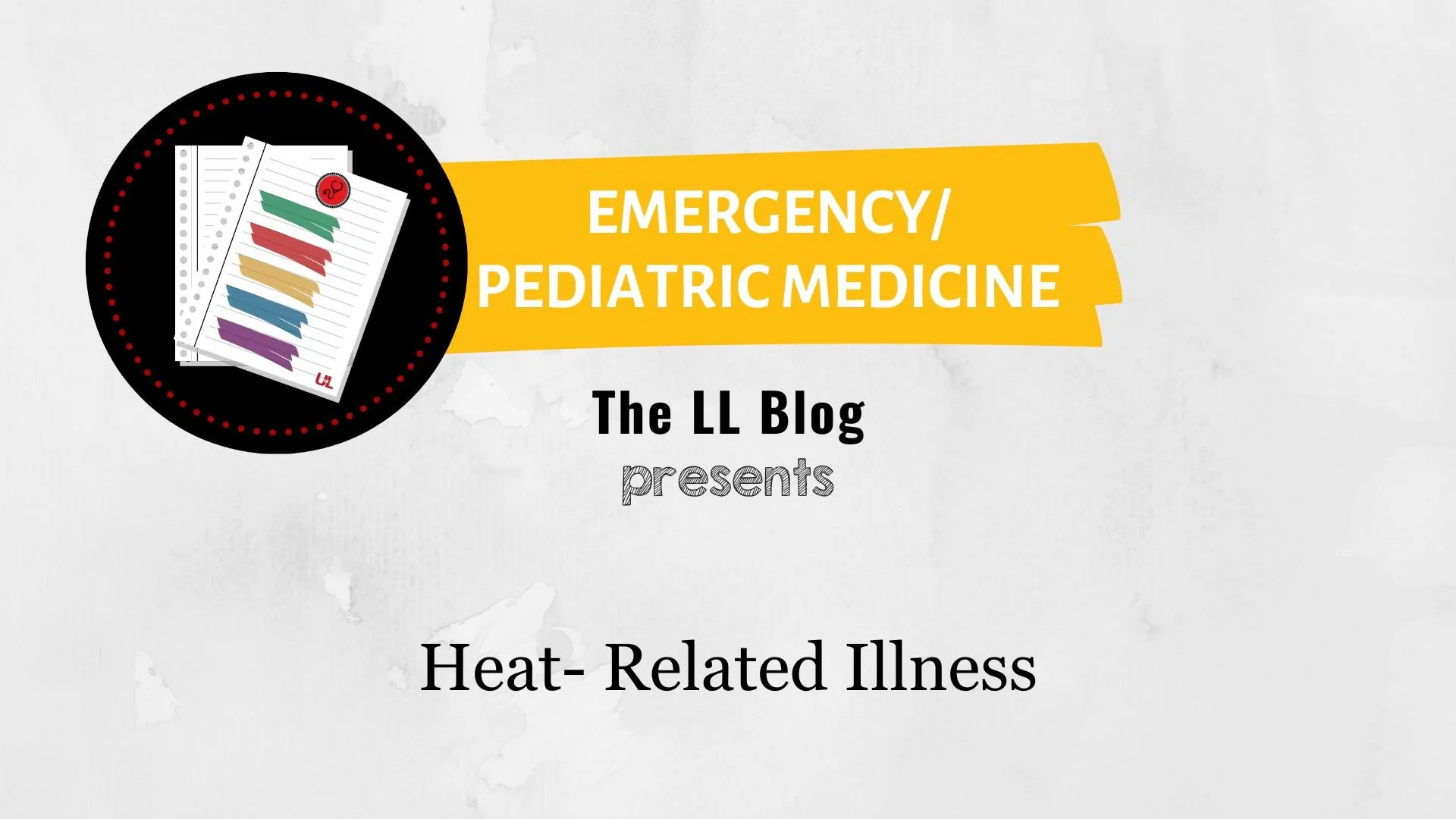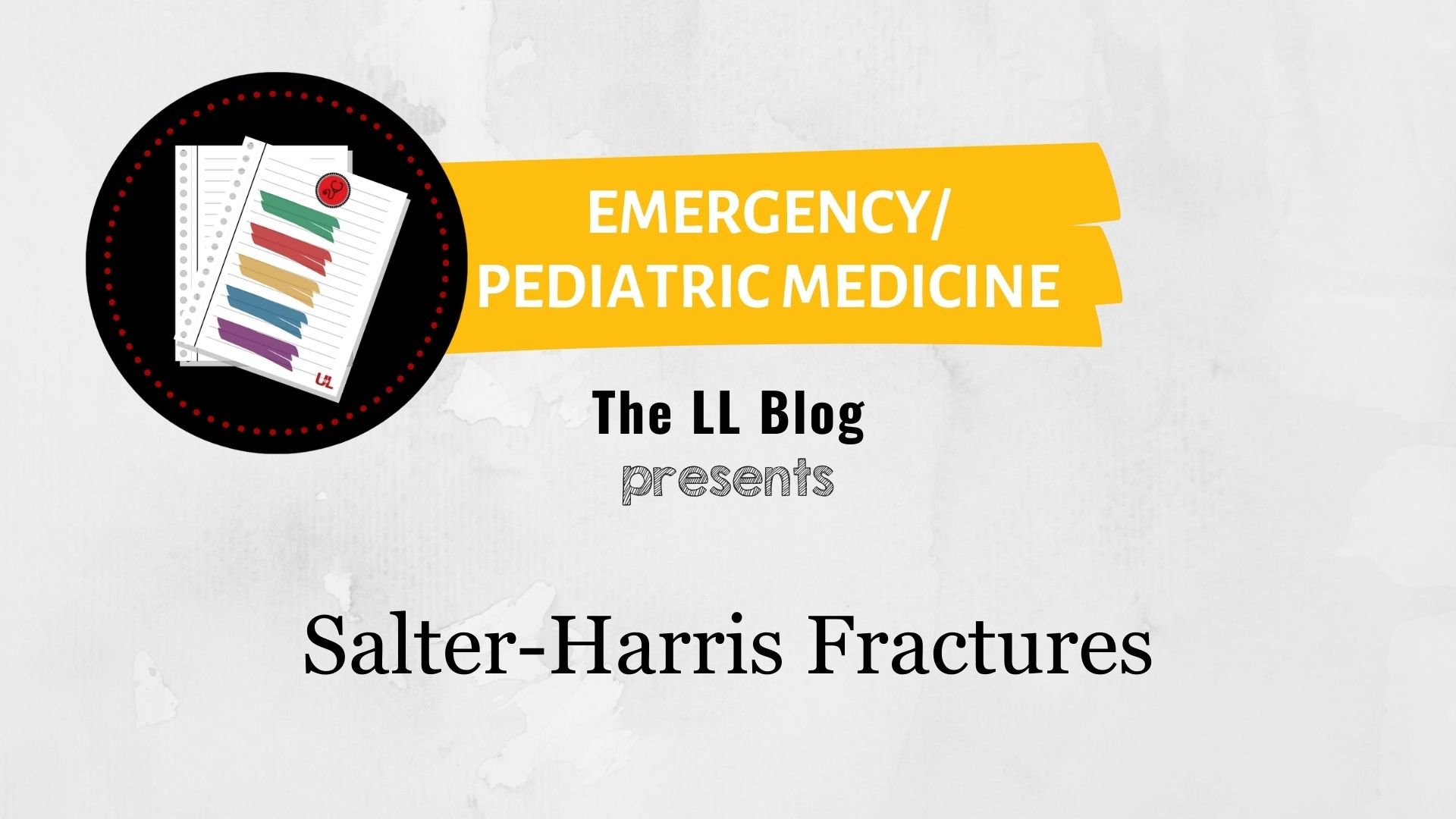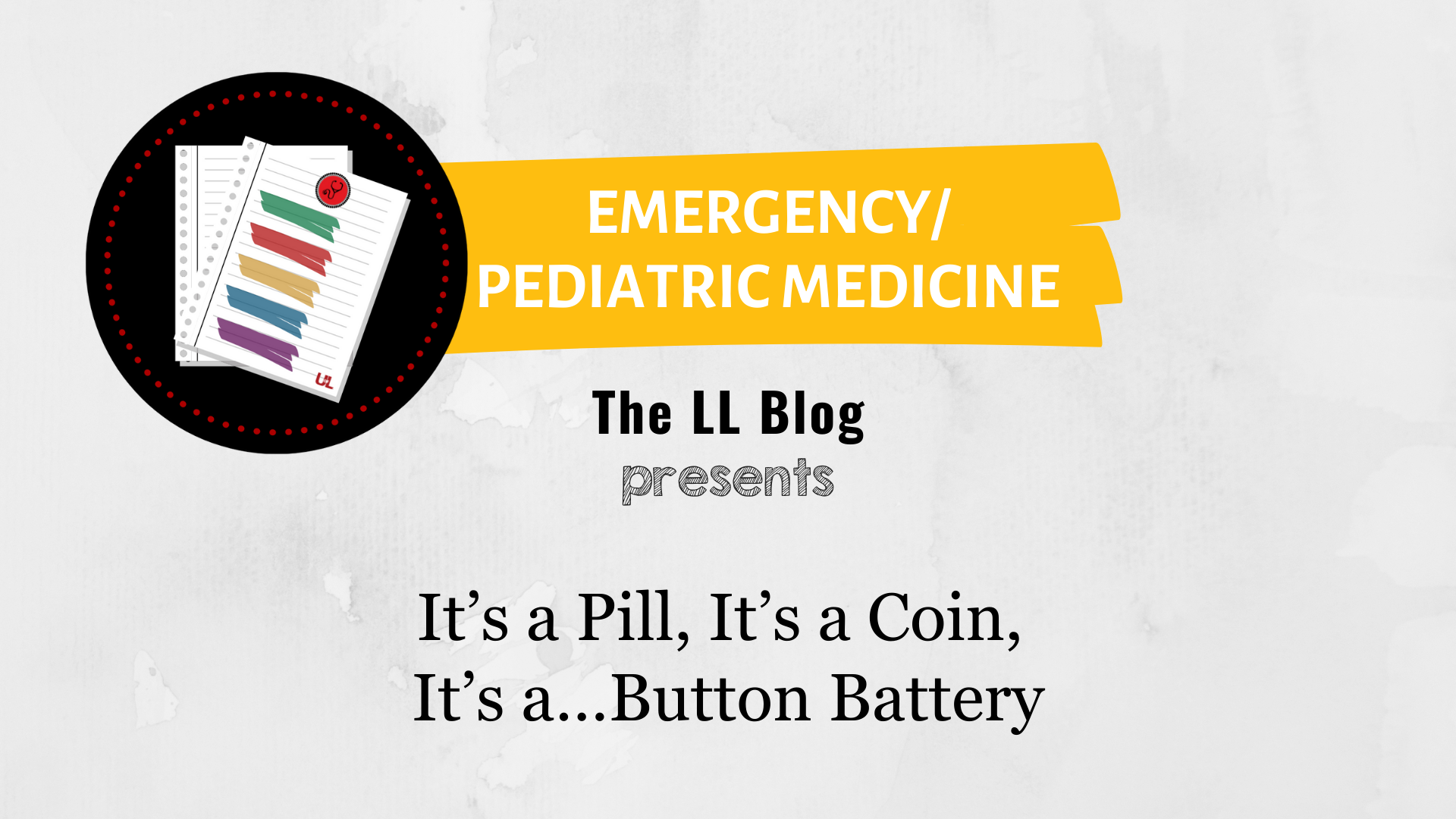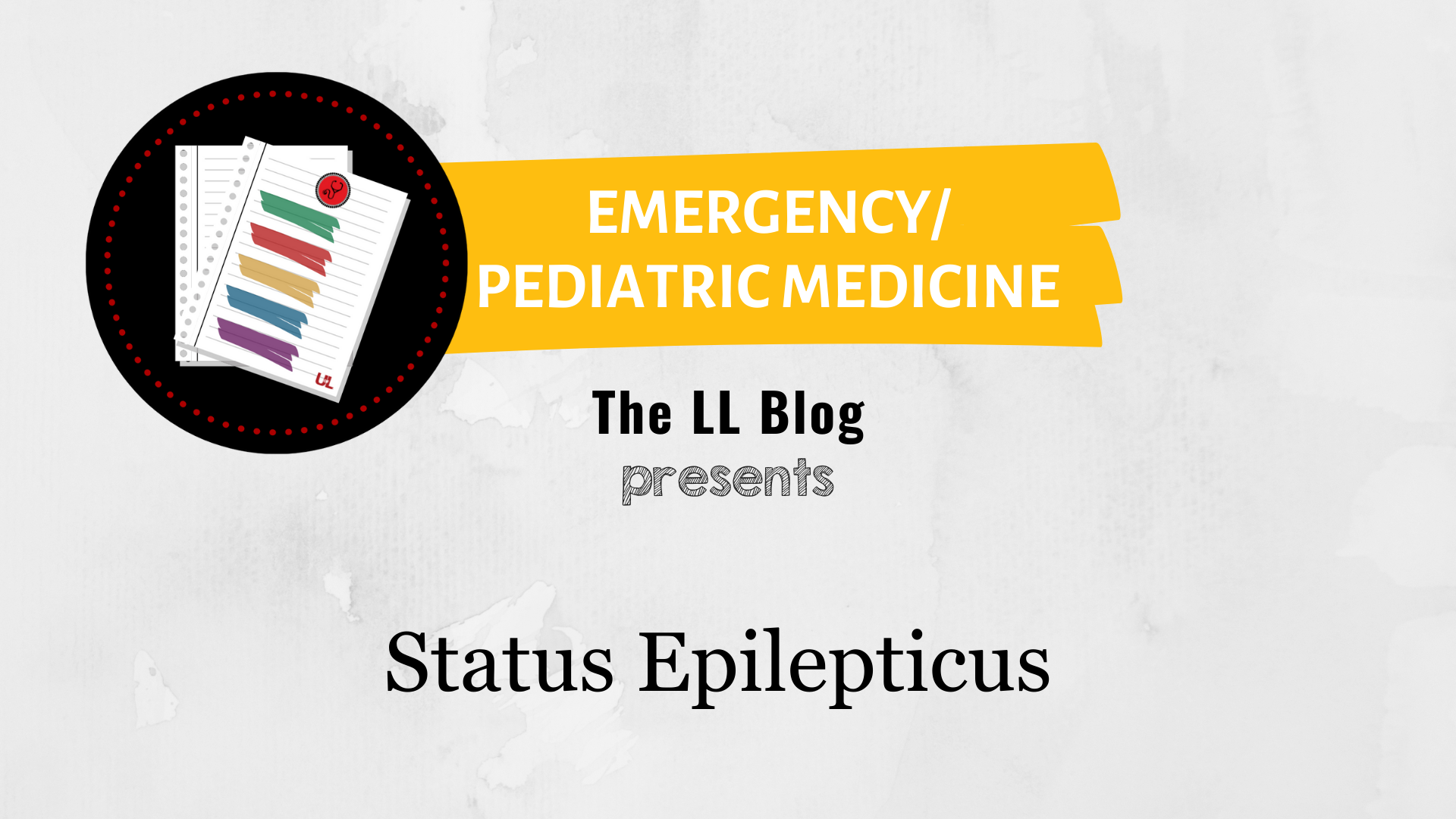Emergency/Pediatric Emergency Medicine
Spider Bites
Dr. Elizabeth Lehto
Patients often present to the emergency with a variety of skin findings and worries about spider bites. In the United States, the two spiders that people are often worried about are the black widow (Latrodectus mactans) and the brown recluse (Loxosceles reclusa). Fortunately, there are only about 500 bites a year in the United States and deaths are very rare. Click to read!
It’s Getting Hot In Here: Head-Related Illness
Dr. Elizabeth Lehto
Heat-related illness is caused by exposure to excessive environmental temperatures that surpass compensatory limits of thermoregulation. These illnesses are distinguished from febrile emergencies in that the increased temperature is caused by environmental heat stress, rather than a change in hypothalamic function in the setting of normothermic environmental conditions.
Presentation can range from mild (heat stress) to severe (heat stroke). Tolerance to heat varies by individual with many factors playing a role on the effect heat has on an individual including general health, overall conditioning, hydration status, and ability to acclimatize. Heat related illness is more common in the elderly and in children under 4 years old. Click to read!
Salter-Harris Fractures
Dr. Elizabeth Lehto
An 8-year-old male presents with pain in his distal right arm after falling from a hoverboard onto an outstretched arm. He has no swelling or obvious deformity to arm but is very tender with palpation over the distal radius. There are no abrasions or lacerations, and patient is neurovascularly intact. Imaging shows no evidence of fracture. Despite negative imaging, you are still concerned that patient has a fracture. You wonder what to do next. Click to read!
It’s a Pill, It’s a Coin, It’s a…Button Battery
Dr. Elizabeth Lehto
A 1-year-old female presents with concern for refusing to eat and increased drooling. She had been doing well until earlier this afternoon when she was playing at a cousin’s house. She spit out most of her food during lunch and has refused to eat and drink since then. Since then, she has started drooling more, isn’t talking as much, and seems more restless than usual. Family initially thought she was tired from her usual routine being disrupted but grew concerned when she started developing an elevated temperature of 99°F.
On examination patient seems restless and is drooling. She is tachycardic with a slightly elevated blood pressure. Respiratory rate and oxygen saturations are normal. Imaging shows a round esophageal foreign body just below the clavicles. Click to read!
IS IT A STEMI? ST - Evaluation Myocardial Infarction and its Equivalents
Dr. Aaron Kuzel
50-year-old male with a history of hypertension, hyperlipidemia, and two pack-per-day tobacco use history presents to the emergency department for sudden onset of crushing chest pain and pressure. The patient states the pain started while watching television at home and that the pain radiates down his right arm. He denies any shortness of breath, nausea, vomiting, or abdominal pain. Emergency medical services (EMS) provided the patient 324 mg Aspirin. EMS transported the patient to the nearest hospital with Percutaneous Coronary Intervention (PCI) capacity. Click to read!
Frostbite
Dr. Elizabeth Lehto
A 12-year-old boy presents to the emergency department with pain, redness, and blisters to multiple toes. The patient had been sledding earlier in the day when he fell into a pond, getting his legs and feet wet. He continued to sled after the fall but decided to go home when he could no longer feel his toes. He walked home in the snow, removing his boots and socks when he got home. He reports that initially he was unable to feel is toes, but they became painful while watching cartoons. You are concerned for frostbite and pause to think about the next steps in management. Click to read!
Baby It’s Cold Outside: Hypothermia Management
Dr. Elizabeth Lehto
A 20-year-old male presents after falling through the ice on a partially frozen lake while ice skating. He was submerged from the chest down for several minutes before he was able to be rescued. He arrives via emergency medical services wrapped in blankets, but still wearing wet clothing. Core temperature is below 30oC. Your medical student asks how they can assist in warming the patient. Click to read!
Status Epilepticus
Dr. Elizabeth Lehto
An 18-year-old female with a history of epilepsy presents via emergency medical services. She has been having generalized tonic-clonic activity for the past 5-minutes. Her sister who lives with her tells you she hasn’t taken her seizure medications for the past two weeks as she has been out of them. She has an abortive medication, but sister was unsure how to administer it, so no medication has been given. Click to read!
IT CRIES…But Now You Won’t—Approach to the Fussy Infant
Dr. Elizabeth Lehto
A two-month-old infant presents to the emergency department with the chief complaint of fussiness for the past two hours. On examination the infant is fussy, but you aren’t able to determine an obvious source of the fussiness. You are unsure of what to do next, but then remember a helpful mnemonic for the differential of a fussy infant: IT CRIES. Click to read!
Dog And Cat Bites
Dr. Elizabeth Lehto
A 5-year-old male presents after being bit on the arm by the family dog. He was playing with the dog and when he went to take the toy away from the dog and the dog bit him on the left arm just prior to arrival. Patient has a 2 cm wound to his left arm. Bleeding is controlled. Family is anxious about whether he will need stitches. Click to read!
TROUBLE BREATHING AND VOMITING. IS IT A PANIC ATTACK, OR IS IT…ANAPHYLAXIS?
Dr. Elizabeth Lehto
18-year-old female presents to the emergency department (ED) with concern for facial flushing, difficulty breathing, and vomiting. She was at a party with some of her friends when she developed flushing and difficulty breathing after eating a cookie. Friends thought she may be having a panic attack, so took her outside where she had several episodes of emesis. Symptoms did not improve, so she was brought to the ED for evaluation. Click to read!
PEDIATRIC HEAD TRAUMA: TO CT OR NOT TO CT?
Dr. Elizabeth Lehto
Sally is a 3-year-old female who presents after a head injury. She was at home jumping from the couch to the coffee table when she fell and struck the front of her head on the ground. The couch is about 1.5 feet off the ground. She cried initially but is now calm. She did not pass out and there was no vomiting. Her mom is very worried about the possibility of bleeding and is asking you if imaging is needed. What do you tell her? Click to read!
DROWNING AND RESUSCITATION: IT’S ABC NOT CAB
Dr. Elizabeth Lehto
Samantha is a 3-year-old female who presents after being found face down in the family pool. She was last seen 20-minutes prior to being found in the pool. On arrival to the emergency department, she has a weak cry and is only intermittently responsive to tactile stimuli. She was intubated for airway protection and an orogastric tube was placed with return of a large volume of clear water. She was admitted to the pediatric intensive care unit for further management. Click to read!
Some items in this lecture may have come from the lecturer’s personal academic files or have been cited in-line or at the end of the lecture. For more information, see our citation page.
Disclaimers
©2015 LouisvilleLectures.org















